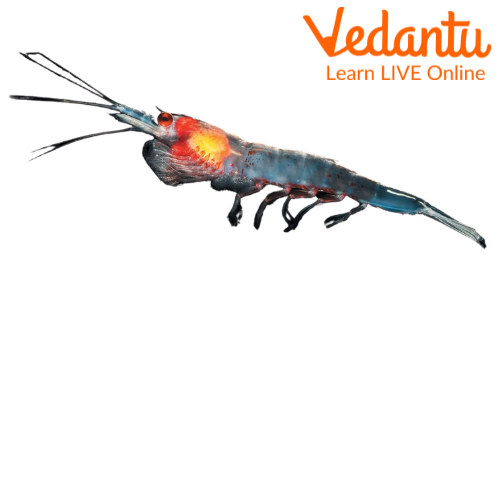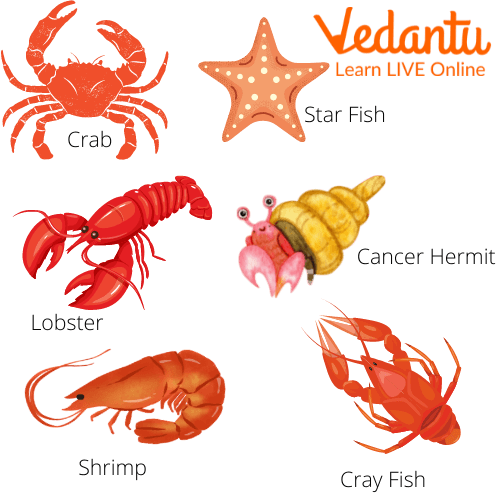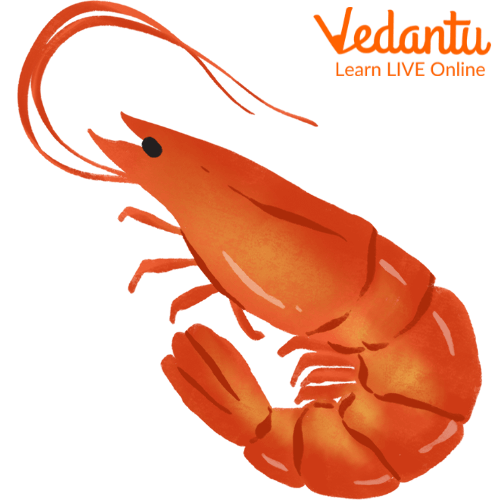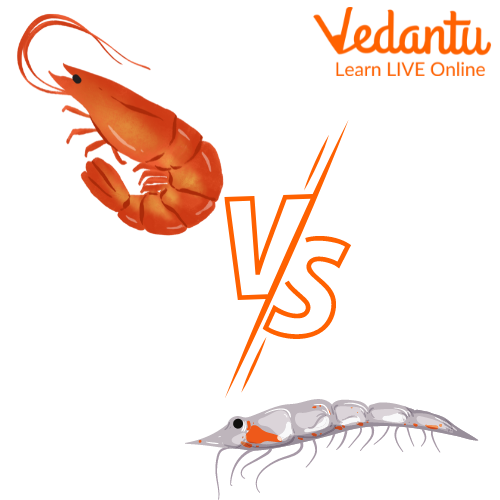




Let’s Learn More about the Krills in Water
Oceanic krill are creatures that resemble shrimp. Krills are small invertebrates that live in frigid waters. They are a member of the class of animals known as crustaceans, together with shrimp, crabs, and lobsters. There are around 85 different krill species or kinds. In particular, around Antarctica, they constitute a significant source of food for fish, squid, whales, seabirds, and other animals.

Krill
Krills play an important part in terms of food. They are also a source of earning for millions of people around the world who engage in harvesting krill as it has been an important industry for maintaining economic stability during times when fishing stocks were low.
What is Krill?
Krills are animals that are closely related to insects, such as crabs, lobsters, and crayfish. Some krill have jointed limbs and can fold their bodies into a ball when threatened with injury. These special adaptations give them protection from predators.

Crustaceans
Krill Body Structure and Food Habits
Aren’t you curious to know what is krill? or what do krill eat? The maximum size of krill is about 2.5 inches (or 6 cm). Krill have an exoskeleton, a tough coating similar to that of other crustaceans. As it matures, a krill sheds its outer covering numerous times. The body has tiny, crimson dots and is practically transparent. Krill have many legs that they utilise for swimming and foraging for food. On their undersides, most krill have unique organs or bodily sections that emit light. Krills usually eat phytoplanktons. They also eat other algae and small plants.
Habitat of Krills
Krill are a planktonic crustacean found in all of the world’s oceans in large numbers. They are among the most abundant and widely distributed animal species on earth, making up around 80 per cent of the biomass found in Antarctic waters. The most important breeding grounds come from Antarctica where about 10 million tonnes of krill is caught annually by industrial fishing boats with mesh nets that "trawl" throughout Antarctic waters.
Food for Krills
The diet of krills varies with season, age, water conditions, prey availability and location. They usually eat a wide variety of things but it varies depending on where they are. They mostly feed on phytoplankton, detritus and other zooplankton.
Interesting Krill Facts
Unlike many birds and animals, the krill fish is not a sociable species. However, for protection, they move in enormous packs known as swarms. These swarms frequently move between shallower waters at night and deeper waters during the day. Some swarms are so enormous that satellite photos can make them out.
The carbon cycle on earth depends heavily on the waste produced by krill.
Krill larvae go through several developmental phases. Both sexes reach sexual maturity around the age of two, while men reach full maturity a few months before females do. The eggs are shed at a depth of approximately 740 feet during the approximately five-and-a-half month-long spawning period (225 metres). The developing krill larvae progressively migrate to the surface as they consume microscopic organisms.

Shrimp
True Shrimps vs Krills
Krills are creatures that resemble shrimps and live in open water. Their gills are situated on the swimming legs, and they have fewer legs specialised for feeding than real shrimp (order Decapoda). Whales, birds, and several species of fish depend on krill as a major food source. The animal class known as crustaceans, which also includes shrimp, crabs, and lobsters, includes krill. Euphausiacea is the order that includes krill. It has been described as consisting of 82 species.

Krill VS Shrimp
Krill in Danger
Due to the loss of sea ice brought on by climate change, krill populations in the northern waters of Antarctica have dramatically decreased since the 1970s. Sea ice shields krill and the phytoplankton they feed on from storms and predators. Some ecologists believe that low krill abundance brought on by climate change is to blame for the population decreases of some penguin species.
Summary
Krill are crustacean animals that live in pelagic water. They look like shrimp, but they are not shrimp. They have many legs that they use for swimming and catching their prey. Krill, like other organisms, face many problems due to changes in the climate. The krill can travel from one location to another by drifting with the ocean currents. The krill may quickly flee when they come upon a predator by swimming backwards at a rate of about 10 body lengths per second. In this article, we learnt several interesting things about krill like what they are, where they live and what their food habits are. We also gained information about the differences between krill and shrimps.
FAQs on What is Krill? Know about Its Structure, Food, Interesting Facts and Threats Faced by Krills
1. How is bioluminescence related to Krills?
Bioluminescence is an ability of an organism to produce light by chemical reaction. Most crustaceans can produce light through their bioluminescent ability. Krills are crustaceans and also have bioluminescence properties. On their undersides, most krill have unique organs or bodily sections that emit light. With the help of bioluminescence, they can catch their prey in the dark, they also use their bioluminescence property to attract their mate and prey.
2. Why is Krill's oil so popular?
Supplements including fish oil and krill oil are two sources of omega-3 fatty acids, which include DHA and EPA. While fish and krill oil both have health advantages, there may be differences in their provenance, cost, and advantages. The source of krill oil is a tiny, shrimp-like creature known as krill. krill oil has a characteristic red hue. Typically, krill oil costs more than fish oil.
3. How fast do krill reproduce?
To reproduce, krill dive deep down to depths of 3000 metres to lay their eggs directly in open water. Female krill can lay up to 10,000 eggs per day! The larvae hatch and rise slowly towards the surface and on the way they develop, mature into adult krill.









